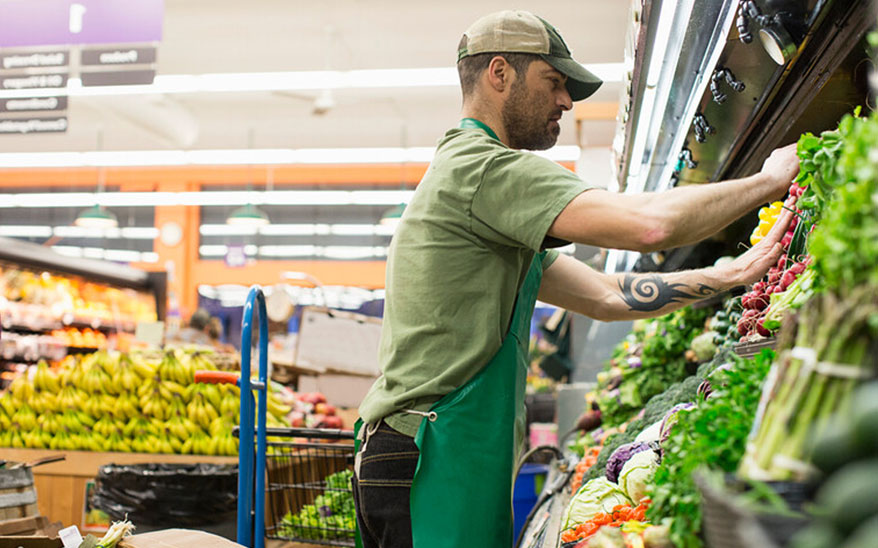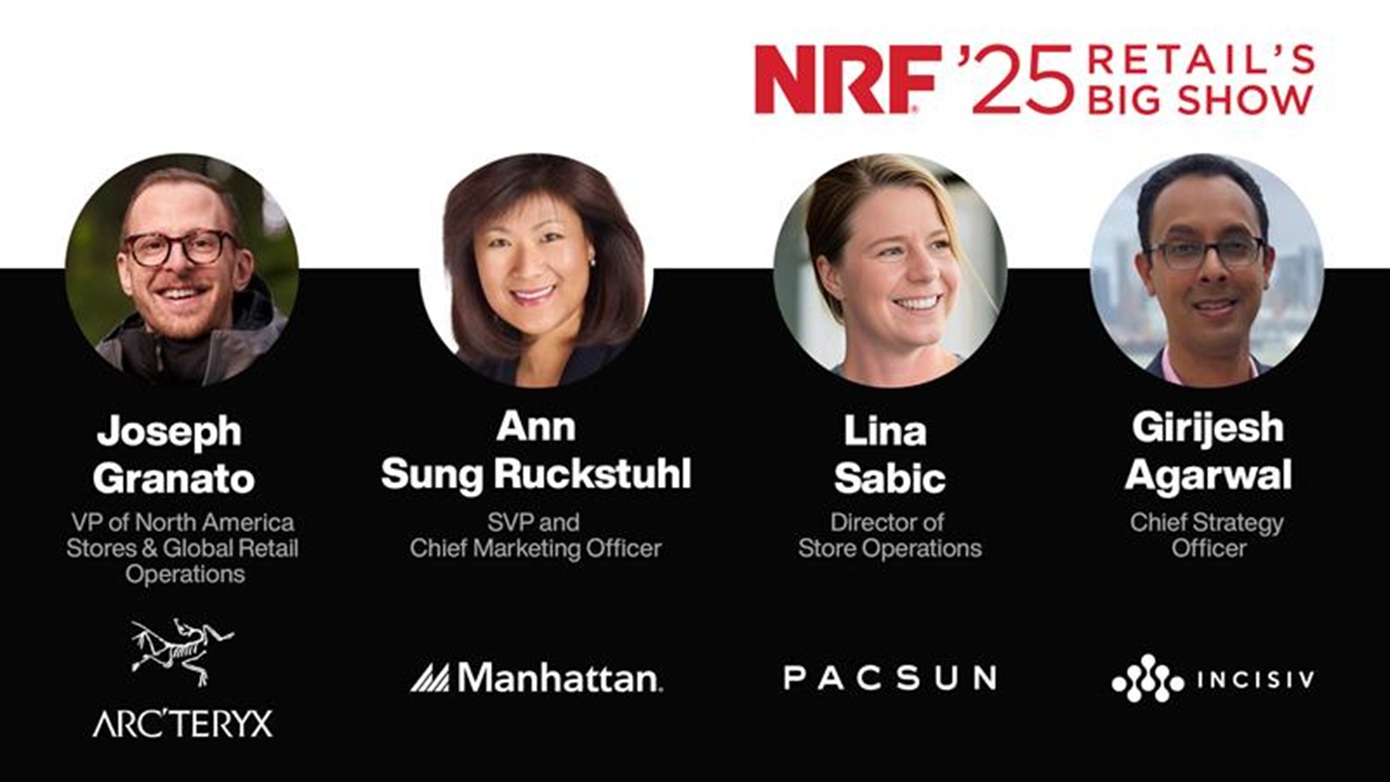5 Things We Learned at NRF 2025
- January 23, 2025

Unified Commerce Gathers Momentum
The foundations of specialty retail are being upended as the race to deliver Unified Commerce gathers pace, influenced and accelerated by technology advances, external factors and the ‘Blue Dot Consumer’. Today’s consumers are the sun at the center of their own commerce universes: they control every aspect of their retail journeys, from where and when they browse and purchase items, to how they chose to pay and receive/collect them.
The gap between customer expectations and current capabilities isn't just a technology challenge, it represents a fundamental reimagining of how specialty retail not just creates but captures value too. Retailers who identify as mature Unified Commerce operators deliver 23% higher inventory turnover, 22% lower customer acquisition costs and 70% higher retention of connected customers, making the economic case for Unified Commerce compelling.
Nevertheless, with only 17% stating that they have achieved unified commerce maturity, and 47% assessing themselves as still only being in the early stages of this journey, there remains a huge fiscal opportunity for the majority retailers.
Those who master unification across the key battleground categories and execute against this unified vision won’t just be connecting channels; they'll be creating sustainable competitive advantages that will define the future of not only their brands, but the future of specialty retail as an industry category too.
AI Everywhere
According to Azita Martin, GM of AI for Retail at Nvidia (who was on stage with Walmart), in the retail context, it is the supply chain that stands to benefit most from AI, while Doug Herrington, CEO of Worldwide Amazon Stores believes AI is going to radically transform the retail sector and could result in the creation of entirely new shopping channels.
Whether it was ‘traditional’ AI, Generative AI or more recently Agentic AI, wherever you were at NRF, the topic and flavours of AI were close at hand, with more than two thirds of exhibitors talking about the broader subject in some capacity.
The increasing lexicon surrounding AI can be hard to follow given the pace of advance. For those wondering, Agentic AI is considered an evolution of AI assistants, capable of carrying out tasks autonomously by making decisions and taking actions within the context of a given environment, whereas Generative AI agents require human inputs to produce outputs.
We see Generative AI as a particular game changer for retailers, whether they’re streamlining warehouse processes from a supply chain perspective, or at the customer coal face with smart GenAI powered chatbots like Manhattan Active Maven.
Maven is infused with customer and order data and trained to handle a wide range of inquiries, including complex requests such as order changes, cancellations, returns, and even, exchanges. The amount of interest in Maven on the booth was an affirmation of the fact AI (in general) is going to continue to play a transformational role in both back and front-end retail and supply chain processes in 2025.
Real-World Stories
There’s nothing more impactful than a great story. At NRF 2025 there was no shortage of real-word examples of ingenuity, creativity and ‘can do’ philosophy from retailers from all over the globe. None maybe were more inspiring than the story of PacSun.
PacSun is a great illustration of today’s modern breed of retailers who adapt technologies at the speed of consumers. Its experience during the pandemic is a great example of a modern fulfillment story. The retailer was in the process of rolling out Manhattan Active Omni order management software but expedited the process across its 315 stores in just two weeks to address the peak of stay-at-home orders. PacSun’s online sales grew 46% in 2020 compared and closed stores went from fulfilling no orders to roughly 80% of all its orders during the peak of the pandemic.
Expanding its solution set to include Manhattan Active Point of Sale across its entire store estate (in only three months) rounds out PacSun’s omnichannel journey and gives its associates a single, intuitive experience across all in-store selling, engagement and fulfilment functions. This unification has helped deliver more personalised and modern shopping experiences to consumers at the most important touchpoint – the point of sale.
PacSun is known for being pragmatic, agile and creative and in 2023 it started TikTok live streams given the platform’s popularity with its Gen Z and (even) Gen Alpha customer base. Within a couple of hours of streams, the team was generating 100,000s of dollars. To fulfil the deluge of orders it opened up its store inventory to ship domestic TikTok orders, while its distribution center handled international shipments. Overnight it added another revenue stream, while meeting the expectations of its core customer demographic, thanks to the capabilities afforded by the Manhattan solutions it uses.
Leveraging Data for Better Decision-Making
From the information powering LLMs to CRMs, data was everywhere you looked at the show. Our latest innovation Postgame Spotlight, utilizes data through a real-time dashboard, highlighting inventory allocation and placement decisions that limit order fulfillment performance. The tool then provides real-time scenario analytics and actionable recommendations that can be shared with inventory planners to eliminate inventory mistakes and reduce order fulfillment costs.
Postgame Spotlight is a great companion to the Fulfillment Insights we introduced last year and while Fulfilment Insights helps retailers compare their performance to their peers, Postgame Spotlight enables them to quickly pinpoint opportunities to enhance inventory performance and improve profitability.
Moving Life and Commerce Forward
What human is human who does not try to make the world a better place right? When humanity and technology combine, great things can be achieved and this year we were deeply honored to sponsor the Retail Orphan Initiative (RetailROI, Inc) in partnership with Adyen.
Thank you to all the National Retail Federation retailers and attendees who stopped by to shop for a good cause while getting a taste of Manhattan’s frictionless POS checkout and payment solution with Adyen and together, we made a meaningful impact and funded six months of education for orphans around the world.
I’d like to offer a special thank you to our incredible partners, Arc'teryx Equipment, PACSUN, Skechers, and YETI who generously provided the merchandise to support this initiative.
Their contributions were instrumental in making the ‘Shop for a Cause’ initiative on Super Saturday, not just possible, but also such a success.









